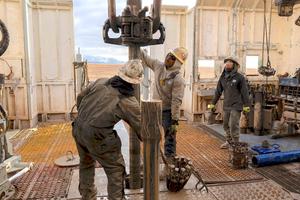Bear Glacier in Alaska's Kenai Fjords National Park. U.S. National Park Service via Flickr
Almost half of Kenai Fjords National Park, which sits on the southern coast of Alaska, is covered in glacial ice. As temperatures rise, almost two-thirds of the park’s glaciers are in retreat, a new study finds.
Of the 19 glaciers dotting the park, 13 have shrunk substantially, according to the research, which tracked their movements using satellite imagery from 1984 to 2021. Four other glaciers proved relatively stable, while just two advanced. The findings were published in the Journal of Glaciology.
“In Alaska, much glacier retreat is being driven by climate change,” said Taryn Black, a doctoral candidate at the University of Washington and lead author of the study. “These glaciers are at really low elevation. It’s possibly causing them to get more rain in the winter rather than snow in addition to warming temperatures, which is consistent with other climate studies in this region.”
The retreat of Bear Glacier. U.S. National Park Service
The study found that glaciers terminating on land are shrinking fastest. These include Pedersen Glacier, which retreated roughly 2 miles over the study period, and Bear Glacier, which retreated 3 miles. Glaciers terminating in lakes tended to shrink more slowly, while those terminating in the ocean largely remained stable or, in the case of the Holgate Glacier, advanced.
Besides Holgate, the only other advancing glacier is the land-terminating Paguna Glacier, which remains covered in debris from a 1964 landslide. “It is likely that this thick debris cover insulated the ice surface,” the study said, “overriding effects of climate change on the glacier’s surface melt, which allowed the glacier to advance for several decades.”
ALSO ON YALE E360
How a Russian Vessel’s Grounding Highlights Perils of Arctic Shipping




